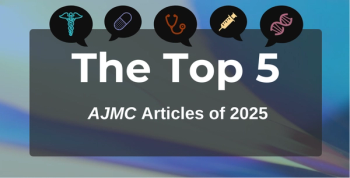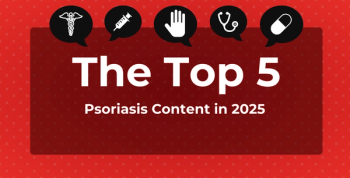
Ending the HIV Epidemic: Why the US Is in the Position to Do So
During the Center for Strategic & International Studies’ event “HIV/AIDS in the Unites States: The Road to 2030,” Anthony S. Fauci, MD, director of the National Institutes of Health’s National Institute of Allergy and Infectious Diseases, and Robert Redfield, MD, director, CDC, joined to explain why the country is ready and able to end the epidemic from both a policy and clinical perspective.
In February, President Donald Trump announced the administration’s plans
Now, 4 months later, Anthony S. Fauci, MD, director of the National Institutes of Health’s National Institute of Allergy and Infectious Diseases, and Robert Redfield, MD, director, CDC, joined to explain why the country is ready and able to end the epidemic from both a policy and clinical perspective.
“It’s the right people in the right place at the right time with the right tools,” explained Fauci during the Center for Strategic & International Studies’ event “HIV/AIDS in the Unites States: The Road to 2030.”
Looking back to the start of the epidemic in the 1980s, the median survival time of a 20-year-old newly diagnosed with HIV was approximately 8 to 15 months. At the time, the dream for Fauci and other doctors treating patients with HIV was to understand what the virus was and someday develop therapies to treat it. The place in which we are now was unimaginable during that time, he said.
Almost 4 decades later, the HIV field has experienced an explosion of innovation and developments, which has transitioned HIV from a fatal disease to a manageable, chronic one. The road to where we are today began with the introduction of azidothymidine, commonly known as AZT, in 1987. Approved based on a relatively small trial, the treatment slightly decreased the level of the virus but not to below detectable levels.
The 1990s brought the advent of antiretroviral therapy, and uptake of triple combination therapy allowed for sustained improvement and
As a result, the life expectancy for a 20-year-old newly diagnosed with HIV is approximately 53 years, comparable with the lifespan of someone without infection.
Recent years have also brought emphasis on another pillar: treatment as prevention. These efforts include HIV testing and counseling, condoms, clean syringes, and medical male circumcision. Arguably the most crucial innovation in this space is pre-exposure prophylaxis (PrEP), which reduces the risk of acquiring HIV by over 90%.
“These evolving concepts have allowed us to say that we have the possibility to end the epidemic,” said Fauci. “History will judge us very harshly if in 10 years from now we blow this opportunity.”
“We’ve made it very clear that this is no longer aspirational. This is doable. It’s highly possible,” said Redfield. “The question is do you want to do it?”
The administration’s answer to the question has been an overwhelming yes, explained Redfield, who credited the administration’s acknowledgment of the epidemic and its decisiveness in implementing the plan as reasons why an end to the epidemic is now possible. According to Redfield, feedback from Congress has also been positive.
However, optimism among the administration and other stakeholders does not discount the barriers the country still faces. There are still 40,000 new infections each year, and disparities are still prominent, with 52% of HIV incidence residing in the rural South and incidence
Outlining what efforts are needed to successfully address these challenges and successfully end the epidemic, Redfield explained that one of the most important aspects is to be able to define what success will look like. For example, in the few years following implementation of the plan, incidence rates will likely increase significantly, but it’s important to recognize that it will represent success in the fact that more people are being diagnosed with HIV and being put on treatment, he said.
The administration’s plan will set its focus on the 48 counties where the epidemic is causing the most burden and deploy personnel, resources, and strategies to prevent new infections. Both Redfield and Fauci emphasized that communities are at the heart of the effort, and that stakeholders must welcome and embrace all innovation that each community will bring for their specific populations. The pair also noted the importance of addressing the stigma that still surrounds HIV and the people most impacted by the virus.
“Stigma is the enemy of public health,” recognized Redfield. And the best way to try and reduce stigma, he said, is to hear from the people living with HIV to bring insight to what works, what doesn’t, and where the gaps are.
Newsletter
Stay ahead of policy, cost, and value—subscribe to AJMC for expert insights at the intersection of clinical care and health economics.








































